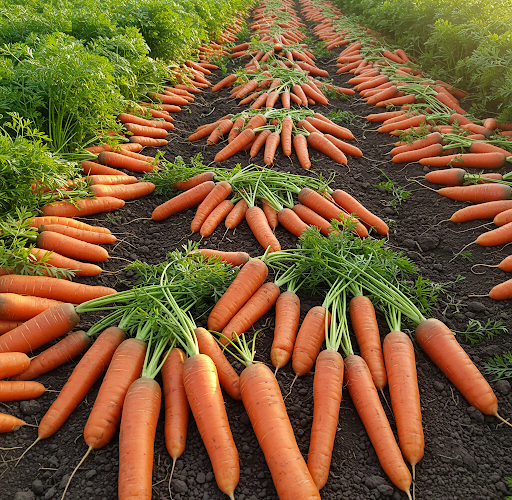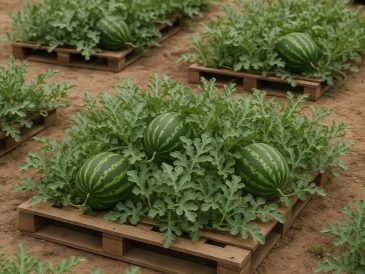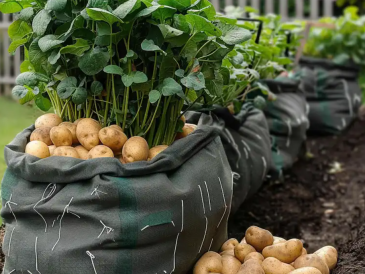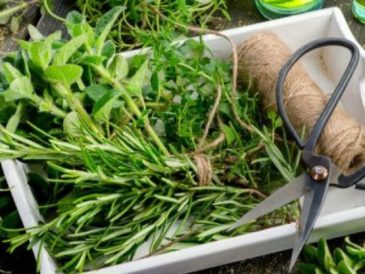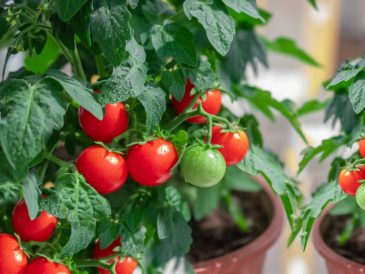Carrots are a staple vegetable in many households and are known for their numerous health benefits. In our country, carrots are typically sown outdoors from March onwards. This year, we have implemented new methods in carrot cultivation and expect a significant increase in yield. Our goal is to grow this highly nutritious vegetable without the use of chemicals and artificial fertilizers. Here, we will share our approach, and we would love to hear your thoughts and experiences in the comments.
Soil Preparation for Carrots
Carrots require well-prepared, loose, and fertile soil to grow properly. To create an ideal environment for carrots, we enrich the soil with several natural ingredients. First, we add sand, as it enhances the soil structure and provides an optimal medium for root growth. Sandy soils have been found to be the best choice for cultivating carrots because they allow for better aeration and drainage, preventing issues like root deformities and rot.
Next, we sprinkle the ground with wood ash. Wood ash serves multiple purposes—it helps to reduce soil acidity, acts as a natural fertilizer, and has disinfectant properties. The presence of ash in the soil is expected to deter pests that commonly attack carrots. To further enhance the quality of the soil, we incorporate a substrate specifically formulated for vegetables and flowers. This addition helps retain moisture and provides essential nutrients to support healthy carrot growth.
Additionally, we make use of the fine soil collected from molehills found on our plot. This soil is naturally loose and well-aerated, making it an excellent choice for carrot beds. After mixing all these ingredients thoroughly, we achieve a rich and fertile mixture that is ideal for growing carrots.
Creating a Raised Bed with a Wooden Pallet
For this particular method, we have chosen to create a raised bed using an old wooden pallet. The pallet was modified and processed to meet our needs. The boards on the top of the pallet serve an essential role in preventing weed growth, acting as a natural mulch layer.
We position the pallet over the prepared soil and fill all the spaces between the boards with our enriched soil mixture. This results in a raised pallet bed with evenly spaced rows, perfect for sowing carrots. The pallet structure provides the added benefit of keeping weeds at bay while allowing for easy access to the plants.
Sowing Carrot Seeds
Carrot seeds are small and can be difficult to distribute evenly at the correct spacing. The recommended depth for planting carrot seeds is about 1–2 cm. Achieving uniform spacing is crucial to ensure that the carrots grow properly without competing for nutrients.
To address this challenge, many gardeners use seed strips made from toilet paper. This technique involves placing the seeds at equal intervals on a moistened strip of toilet paper, which can be done in advance at home. Once on the field, we simply lay the seed strips in the prepared rows, ensuring an even distribution.
If making seed strips at home seems too complicated, pre-made seed strips are readily available for purchase at gardening stores or online. However, if you prefer a more traditional approach, you can sow the seeds by hand, taking care to space them correctly.
After placing the seeds in the rows, we cover them with a thin layer of substrate. Finally, we lightly moisten the soil to encourage quick germination. Carrot seeds can begin to germinate at temperatures as low as 3–5 degrees Celsius, making them quite resilient to early spring conditions.
Caring for Carrots During Growth
One of the significant advantages of this raised pallet bed method is that weeds will not grow around the carrots, eliminating competition for nutrients. This means less effort spent on weeding and more time focusing on plant health.
While carrots are relatively low-maintenance, they are sensitive to extreme temperatures and inadequate watering. During hot summer months, consistent watering is essential to ensure a good yield. Without proper moisture, carrots can become tough and underdeveloped. To retain moisture in the soil, we recommend mulching around the plants.
Expected Harvest Timeline
Carrots typically take about 70 days to form and become suitable for harvesting. However, if left in the ground for a longer period, they will continue to grow. For those who prefer larger carrots, the harvest can be extended to approximately 120 days after sowing.
By implementing these natural and sustainable methods, we anticipate a healthy and abundant carrot harvest. We encourage you to try this approach in your own garden and let us know about your experiences. Have you used similar methods before? Do you have any additional tips for growing carrots organically? Share your thoughts in the comments!

